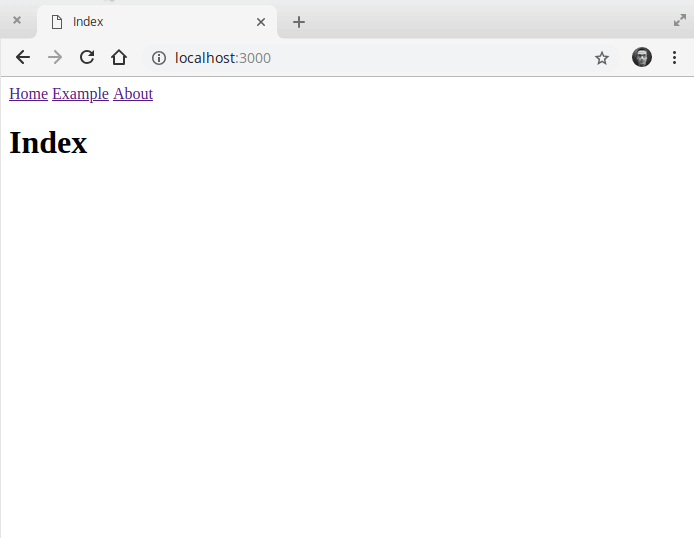Nuxt.js is a Vue.js Meta Framework to create complex, fast & universal web applications quickly. In this guide, we'll show how to use Guess.js to predictively prefetch pages in your Nuxt.js apps.
Creating a Nuxt.js Application
Creating a Nuxt.js application from scratch is really easy, it only needs 1 file and 1 directory. Let's create an empty directory and package.json file to start working on the application:
$ mkdir guess-nuxt && cd guess-nuxt && npm init -yThen we need to specify how to start nuxt:
{
"name": "guess-nuxt",
"scripts": {
"dev": "nuxt",
"build": "nuxt build",
"start": "nuxt start"
}
}dev- will launch Nuxt.js vianpm run devathttp://localhost:3000.build- will build your application with webpack and minify the JS & CSS (for production).start- will start the server in production mode (after running nuxt build).
Add nuxt to the project's as dependencies and guess-webpack as devDependencies:
$ npm i nuxt && npm i -D guess-webpackApplication Layout
The application layout defines the structure of the application. In our example, we'll create a layout which has a nav and an element where we'll render the currently selected page. In the guess-nuxt directory, create a folder called layouts and add a file called default.js:
$ mkdir layouts && cd layouts && touch default.vueNext, let’s update the default.vue file as well:
<template>
<div>
<nav>
<nuxt-link to="/" exact>Home</nuxt-link>
<nuxt-link to="/example">Example</nuxt-link>
<nuxt-link to="/about">About</nuxt-link>
</nav>
<nuxt/>
</div>
</template>In the layout/default.vue above, we create the navigation menu of the application. We create three links: /, /examples, and /about. After that, we add a <nuxt/> element. Inside of this element, we render the children elements which are passed to the layout.
Creating Pages
Nuxt.js will transform every *.vue file inside the pages directory as a route for the application.
pages/
├── about.vue
├── example.vue
├── index.vue
└── media.vueLet's create pages
$ mkdir pages && cd pages && touch about.vue example.vue index.vue media.vueInside of pages/about.vue, add a link to the media page:
<template>
<div>
<h1>About</h1>
<p>You can find the media page <nuxt-link to="/media">here</nuxt-link>.</p>
</div>
</template>In rest of pages/*.vue add some content:
<template>
<h1>[REPLACE_WITH_TITLE_PAGE]</h1>
</template>At this stage, when you run npm run dev inside of the guess-nuxt directory and you open http://localhost:3000, your application should look like this:

Configuring Nuxt.js
Now let us introduce the GuessPlugin plugin to the webpack configuration of our Nuxt.js application!
Create a file called nuxt.config.js in guess-nuxt with the content below. In Nuxt 2.4.0, pages are automatically prefetched using quicklink. To use Guess.js instead, you need to disable that feature by setting router.prefetchLinks to false.
import { readFileSync } from 'fs'
import { GuessPlugin } from 'guess-webpack'
export default {
build: {
extend(config, ctx) {
if (ctx.isClient) {
config.plugins.push(
new GuessPlugin({
reportProvider() {
return Promise.resolve(JSON.parse(readFileSync('./routes.json')))
}
})
)
}
}
},
// Nuxt > v2.4.0
router: {
prefetchLinks: false
}
}Now create a file called routes.json, in the same directory as nuxt.config.js, and add the following content:
{
"/": {
"/example": 80,
"/about": 20
},
"/example": {
"/": 20,
"/media": 0,
"/about": 80
},
"/about": {
"/": 20,
"/media": 80
},
"/media": {
"/": 33,
"/about": 33,
"/example": 34
}
}This file specifies how many times the user has visited a given page from another. For example, if we look at the first property of the outermost object, we can see that from /, there were 80 sessions in which users have visited /example and 20 sessions in which users have visited /about.
Based on the content of this file, Guess.js is going to build a model for predictive prefetching.
reportProvider, you can set the GA property with value your Google Analytics View ID. In this case, Guess.js will fetch data from your Google Analytics account and build the report automatically. For the purpose, you'll have to provide a read-only access to your view.
In this particular case there is slight changes in nuxt.config.js:
import { readFileSync } from 'fs'
import { GuessPlugin } from 'guess-webpack'
const { GA } = process.env
export default {
build: {
extend(config, ctx) {
if (ctx.isClient) {
let guessOptions = {}
if (GA) guessOptions.GA = GA
else guessOptions.reportProvider = () => Promise.resolve(JSON.parse(readFileSync('./routes.json')))
config.plugins.push(
new GuessPlugin(guessOptions)
)
}
}
}
}Alternatively, there is a @nuxtjs/guess module for Guess.js!
Setup
- Add
@nuxtjs/guessdependency to your project - Add
@nuxtjs/guessto modules section ofnuxt.config.js - If using Nuxt > 2.4.0, set
router.prefetchLinkstofalseinnuxt.config.js
{
"modules": [
[ "@nuxtjs/guess", { "GA": "XXXXXXX" }]
]
}Options are given directly to guess-webpack options.
Nothing more to do, @nuxtjs/guess will automagically prefetch the routes depending of your Google Analytics stats sunglasses 😎
Predictive Prefetching
Let's go back one step. We're at the finish line! 🏁 Now we're going to perform the actual predictive prefetching.
Let's introduce a small snippet of code as part of the Nuxt.js plugin/guess.js:
import Vue from 'vue'
import { guess } from 'guess-webpack/api'
export default ({ app: { router } }) => {
router.afterEach(to => {
// Wait for page to be displayed
Vue.nextTick(() => {
let predictions = Object.keys(guess()).sort((a, b) => a.probability - b.probability)
predictions.forEach(path => {
router.getMatchedComponents(path).forEach(Component => {
if (typeof Component === 'function') {
try { Component() } catch (e) {}
}
})
})
})
})
}Next, register plugin/guess.js in nuxt.config.js:
export default {
plugins: [
{ src: '~/plugins/guess', ssr: false }
]
}Conclusion
In this guide, we saw how we could integrate Guess.js with Nuxt.js.
First, we developed a simple Nuxt.js application with four pages. After that, we altered the webpack configuration of our application by using nuxt.config.js and introduced the GuessPlugin as part of the build phase.
Finally, inside guess.js plugin, we added a small snippet with the predictions logic, where we use the guess() function from the guess-webpack/api package to predict which pages are likely to be visited next from the current page. Using router we prefetched the bundle corresponding with the predicted pages by Guess.js.